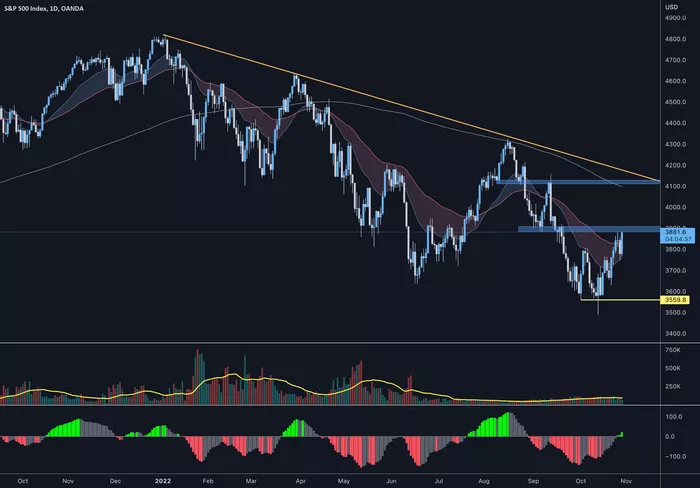Investing in the stock market can be a rewarding and profitable way to build wealth over time. However, the world of stocks can seem overwhelming to beginners, and many people are unsure where to start. In this guide, we will walk you through the essential steps on how to get into stocks, from understanding the basics to executing your first trade.
What Are Stocks?
Before jumping into the process of investing in stocks, it’s important to understand what stocks are. In simple terms, a stock represents a share in the ownership of a company. When you buy a stock, you’re purchasing a small piece of that company. Stocks are often traded on exchanges, such as the New York Stock Exchange (NYSE) or the Nasdaq.
By owning stocks, you can potentially benefit from two main sources of income:
Capital Gains: This occurs when the price of your stocks increases, allowing you to sell them for a profit.
Dividends: Some companies pay out a portion of their earnings to shareholders, known as dividends. These can be received regularly, such as quarterly.
Why Invest in Stocks?
Stocks have historically been one of the best ways to grow your wealth. The average return on stocks over the long term has been around 7-10% annually, outperforming other types of investments like bonds or savings accounts.
While investing in stocks offers significant growth potential, it also comes with risks. The value of stocks can fluctuate due to various factors, such as market conditions, economic events, or company performance. Therefore, it is crucial to approach stock investing with a clear strategy and risk management techniques.
Steps to Getting Into Stocks
1. Understand Your Investment Goals
Before you start buying stocks, it’s essential to understand why you want to invest in the first place. Are you looking for long-term growth, short-term gains, or regular income through dividends? Your investment goals will determine the type of stocks you should buy, as well as your risk tolerance.
Long-Term Growth: If your goal is long-term wealth accumulation, you may want to focus on buying shares of companies with strong growth potential.
Short-Term Gains: If you are looking to make quick profits, you might consider day trading or investing in more volatile stocks.
Dividend Income: If you prefer regular income, consider investing in dividend-paying stocks.
Understanding your goals will help shape your overall strategy and guide your decisions.
2. Determine Your Risk Tolerance
Risk tolerance refers to how much risk you are willing to take when investing. Stocks, especially individual stocks, can be volatile, and their value can rise or fall sharply in short periods. Knowing your risk tolerance will help you determine the right mix of investments.
There are generally three types of risk tolerance:
Conservative: If you have a low risk tolerance, you may want to invest in stable, blue-chip stocks or ETFs that track the broader market.
Moderate: A moderate risk tolerance allows you to diversify your portfolio by including a mix of safe and growth-oriented stocks.
Aggressive: With an aggressive risk tolerance, you might invest more heavily in high-growth or volatile stocks for higher potential returns, but with higher risk.
3. Educate Yourself on Stock Market Basics
The next step is to educate yourself about the stock market. Understanding key concepts like stock exchanges, market orders, stock indices, and company valuations is crucial before making any investment decisions. Here are some essential terms you should familiarize yourself with:
Stock Exchanges: Places where stocks are bought and sold. The NYSE and Nasdaq are the largest exchanges in the U.S.
Market Orders: A type of order to buy or sell a stock immediately at the current market price.
Limit Orders: An order to buy or sell a stock at a specific price or better.
Stock Indices: Indices like the S&P 500 and the Dow Jones track the performance of a group of stocks.
Valuation Metrics: Measures like Price-to-Earnings (P/E) ratio and Earnings Per Share (EPS) help assess a company’s financial health.
You can learn these terms through books, online courses, or by following reputable financial news sources.
4. Set Up a Brokerage Account
In order to buy stocks, you need to open a brokerage account. A brokerage account is an online account that allows you to buy and sell stocks and other financial instruments. There are two main types of brokerage accounts:
Traditional Brokerage Account: Offers full access to the stock market, including stocks, ETFs, options, and more.
Robo-Advisors: Automated platforms that manage your investments based on your risk profile and goals.
When selecting a brokerage, consider the following factors:
Fees and Commissions: Some brokerages charge fees for each trade, while others offer commission-free trades. Compare the fees before choosing a platform.
Account Types: Make sure the brokerage offers the type of account you need (e.g., individual, joint, retirement accounts).
Tools and Resources: Many brokerages offer educational resources, research tools, and trading platforms. Ensure the platform suits your needs.
5. Research and Choose Stocks
Once your brokerage account is set up, you can begin researching stocks. You should focus on companies that align with your investment goals and risk tolerance. Here are some tips for selecting stocks:
Start with Familiar Companies: It’s often helpful to invest in companies you already know and understand. Familiar industries and brands may be easier to assess.
Use Fundamental Analysis: This involves evaluating a company’s financial health, including its earnings, debt, and growth prospects.
Consider Technical Analysis: This approach focuses on studying price patterns and market trends to predict future price movements.
Diversify Your Portfolio: Instead of investing all your money in a single stock, diversify your investments to spread out the risk. This can be done by purchasing stocks in different industries or sectors.
Many investors choose to buy shares of well-established companies (blue-chip stocks) that have a solid track record of performance. Others opt for growth stocks, which have higher potential returns but also greater risk.
6. Start with Low-Cost ETFs and Index Funds
If you’re new to investing and unsure about picking individual stocks, exchange-traded funds (ETFs) or index funds can be a good starting point. These funds are collections of stocks or other securities, allowing you to invest in a broad market index (like the S&P 500) without having to pick individual stocks.
ETFs: Trade like stocks on the exchange but hold a variety of assets, offering diversification.
Index Funds: These funds track a specific index and offer broad market exposure.
By investing in ETFs or index funds, you can enjoy the benefits of diversification while reducing risk. They also tend to have lower fees than actively managed funds.
7. Decide How Much to Invest
Determining how much money to invest is a crucial part of your strategy. Your investment amount should be based on your financial situation, risk tolerance, and goals. A general rule of thumb is to only invest money you can afford to lose, especially if you are new to investing and still learning the ropes.
Some people start small with only a few hundred or thousand dollars and gradually increase their investment as they become more comfortable with the market. You don’t need a large amount of money to begin investing in stocks.
8. Execute Your First Trade
Once you’ve chosen your stocks or ETFs, it’s time to place an order. You can do this directly through your brokerage account by selecting the stock or fund, entering the amount you wish to purchase, and reviewing your order before confirming it.
There are different types of orders you can use to execute your trade:
Market Order: This will buy or sell your stock at the current market price.
Limit Order: This lets you specify the price at which you want to buy or sell a stock. If the stock reaches that price, the order will be executed.
9. Monitor Your Investments
After you’ve made your first stock purchase, it’s important to monitor your investments regularly. Keep an eye on your stocks’ performance, the overall market trends, and any news related to the companies in which you’ve invested.
However, it’s also important to avoid over-monitoring. Short-term fluctuations are normal in the stock market, and long-term investing requires patience. Avoid making impulsive decisions based on market volatility.
10. Rebalance Your Portfolio
Over time, the performance of your stocks may cause your portfolio to shift from your original asset allocation. For example, some stocks may perform better than others, and your risk level might change. Periodically rebalancing your portfolio ensures that it remains aligned with your investment goals and risk tolerance.
Rebalancing can be done annually or semi-annually, depending on your preferences.
Conclusion
Getting into stocks can seem daunting at first, but with the right approach and understanding, it can become an accessible and rewarding way to build your wealth over time. By following the steps outlined in this guide — from setting investment goals to executing your first trade — you can start your journey as a stock investor.
Remember that stock investing involves both risks and rewards. It’s essential to educate yourself, start small, and stay disciplined. With time, patience, and consistent effort, you can increase your knowledge and confidence as an investor, and ultimately, achieve your financial goals.
Related topics:
































